Day 3 :
Keynote Forum
Faisal Abdul Latif Alnasir
The Arab board for Medical Specializations, UAE
Keynote: Effective communication and its role on patients’ health
Time : 09:00-09:40
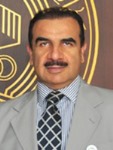
Biography:
Faisal Abdullatif Alnasir is currently Professor and Chairman of the Department of Family & Community Medicine. He was the former Vice President of the Arabian Gulf University and also the former President of the Scientific Council of Family & Community Medicine in the Arab Board for Health Specialties. He was the first and the only Bahraini Physician to obtain MRCGP and FFPH of UK, and also the first Bahraini physician to obtain PhD in Family Medicine. Currently he is a Fellow member of Royal College of General Practitioner (FRCGP) UK, fellow of the College of Public Health, UK, member of the Irish College of General Practitioner (ICGP), Ireland and is member of the American Academy of Family Physicians. He is also the General Secretary of the International Society for the History of Islamic Medicine and advisor for the EMRO WHO. With regards to his post graduate education Prof Alnasir completed his PhD in Family Medicine from Glasgow University, Scotland, in 1997, his Family Medicine specialty from AUB, Beirut in 1984, and M.B.B.ch from Ain Shams University, Cairo, Egypt in 1979. Alnasir received many awards and honors including life membership and appreciation of Excellence from various organizations such the Pakistan Academy of Family Physicians in March 2015 The World Organization Congress of Family doctors (WONCA) as the Global Family Doctor of the month, the Arab Council for Health Specialties and the Sudanese National Council. He recently was also honored by the Bahrain Parents Caring Society with the prize of HH Sheikh Khalifa bin Ali Alkhalifa as the most distinguished Bahraini in parent’s caring and received Gold Medal in the Education Day of Bahrain offered by H.E Amir of Bahrain
Abstract:
Communication is the act of transferring information from one place to another. But how well this information can be transmitted and received is a measure of how good our communication skills are. To be able to transfer information accurately, clearly and as intended, is very important and is considered as a critical managerial skill that forms the foundation of an effective leadership. Through communication, people’s attitude, behavior, and understandings are very much influenced. Decisions taken are often dependent upon the quality and quantity of the information received. rnUsually knowledge has to be transformed into accurate plan of action within the patient and it can’t be done without proper and adequate communication. Therefore, effective communication is significant for any medical professional enabling them to perform their basic functions of caring for their patients effectively. Researches have affirmed continuously the connection between healing and human relationships and that medicine is totally reliant on communication, through the exchange of ideas, messages, or information by speech, signals, or writing. When communication is thorough, accurate, and timely, the entire health system organization tends to be vibrant and effective. Patient often measures quality by how well the physician listens, his/her non-verbal communication, and acknowledges concerns. Quality is also measured by how thoroughly the physician explains the diagnosis and treatment options, and how well the physician involves the patient in decisions concerning his or her care. rnIn this article we highlight methods of proper of communication and emphasize on how important it is in detecting medical problems and promoting the health of individuals and the community
rn
- Case Reports Related to Health Care and Public Health | Pathology | Psychology
Session Introduction
Diaa Salah
Promo Health Fz. LLC, UAE
Title: Current economic challenges and healthcare investment opportunities

Biography:
Diaa Salah is the Chief Executive Officer of Promo Health Fz. LLC, a specialized company in healthcare investment and healthcare business development associated with Dubai Healthcare City and certified by CPQ. He is a Physician graduated from Medical College in 1992, studied MBA in Healthcare Management. He has 23 years of experience in Healthcare Business Management in GCC and North of Africa, managed feasibility and investment plans for major healthcare players. He has many TV interviews and participations in healthcare conferences and workshops in MENA area.
Abstract:
It is a misconception that the healthcare sector is recession proof and affected negatively by oil prices. The sector has seen its share of challenges in the last few years and is now expected to see a period of healthy growth 2016 and for successive 5 years. Continued investment by the governments as well as the private sector have improved healthcare infrastructure in GCC; however, it continues to lag the standards of developed markets. The per capita healthcare expenditure and healthcare expenditure as a percentage of GDP are still below that of developed economies. A number of new players and investors starting and going ahead, we expect to see some corporate merges leading to an overall improvement in the healthcare services offered in the UAE. We estimate demand for healthcare in the region to grow due to a rapidly growing population, rising income levels, increased insurance penetration and an increased prevalence of lifestyle-related diseases. The opportunity of Public-Private-Partnership is emphasized as the number of beds remains in line with the current GCC average and below the US and European averages. The gradual improvement of healthcare infrastructure and standards in the GCC along with increasing insurance penetration should see an increase in number of patients opting for treatments locally, thus seeing an increase in demand for hospital beds. The GCC Healthcare market is showing a rising figures of growth. The combined forces of regulatory pressure, funding reform (mandatory health insurance) and the growing impact of underlying health issues make this inevitable. The GCC healthcare sector presents some interesting opportunities for investors specially those who will play out of the box creating clusters for medical tourism and building innovative centers of excellence focusing in depth sub-specialties. While any investment in the healthcare sector has a longer payback period, there is a very strong demand and supportive government policies that makes for a good business case.
Faisal Abdul Latif Alnasir
The Arab board for Medical Specializations, UAE
Title: Effective communication and its role on patients’ health
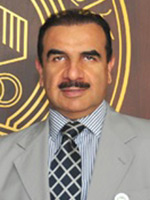
Biography:
Faisal Abdullatif Alnasir is currently Professor and Chairman of the Department of Family & Community Medicine. He was the former Vice President of the Arabian Gulf University and also the former President of the Scientific Council of Family & Community Medicine in the Arab Board for Health Specialties. He was the first and the only Bahraini Physician to obtain MRCGP and FFPH of UK, and also the first Bahraini physician to obtain PhD in Family Medicine. Currently he is a Fellow member of Royal College of General Practitioner (FRCGP) UK, fellow of the College of Public Health, UK, member of the Irish College of General Practitioner (ICGP), Ireland and is member of the American Academy of Family Physicians. He is also the General Secretary of the International Society for the History of Islamic Medicine and advisor for the EMRO WHO. With regards to his post graduate education Prof Alnasir completed his PhD in Family Medicine from Glasgow University, Scotland, in 1997, his Family Medicine specialty from AUB, Beirut in 1984, and M.B.B.ch from Ain Shams University, Cairo, Egypt in 1979. Alnasir received many awards and honors including life membership and appreciation of Excellence from various organizations such the Pakistan Academy of Family Physicians in March 2015 The World Organization Congress of Family doctors (WONCA) as the Global Family Doctor of the month, the Arab Council for Health Specialties and the Sudanese National Council. He recently was also honored by the Bahrain Parents Caring Society with the prize of HH Sheikh Khalifa bin Ali Alkhalifa as the most distinguished Bahraini in parent’s caring and received Gold Medal in the Education Day of Bahrain offered by H.E Amir of Bahrain
Abstract:
Communication is the act of transferring information from one place to another. But how well this information can be transmitted and received is a measure of how good our communication skills are. To be able to transfer information accurately, clearly and as intended, is very important and is considered as a critical managerial skill that forms the foundation of an effective leadership. Through communication, people’s attitude, behavior, and understandings are very much influenced. Decisions taken are often dependent upon the quality and quantity of the information received. Usually knowledge has to be transformed into accurate plan of action within the patient and it can’t be done without proper and adequate communication. Therefore, effective communication is significant for any medical professional enabling them to perform their basic functions of caring for their patients effectively. Researches have affirmed continuously the connection between healing and human relationships and that medicine is totally reliant on communication, through the exchange of ideas, messages, or information by speech, signals, or writing. When communication is thorough, accurate, and timely, the entire health system organization tends to be vibrant and effective. Patient often measures quality by how well the physician listens, his/her non-verbal communication, and acknowledges concerns. Quality is also measured by how thoroughly the physician explains the diagnosis and treatment options, and how well the physician involves the patient in decisions concerning his or her care. In this article we highlight methods of proper of communication and emphasize on how important it is in detecting medical problems and promoting the health of individuals and the community
Hasan M Isa
Arabian Gulf University, Bahrain
Title: Abetalipoproteinemia: Case series and literature review

Biography:
Hasan M Isa has completed his MBBch from Alexandria University and then joined for Arab Board Residency Program in Pediatrics (CABP) in 2003 followed by a Fellowship Program in Pediatric Gastroenterology, Hepatology and Nutrition at The Children’s Hospital at Westmead, Sydney, Australia. Since then, he has been serving as a Pediatric Consultant and Gastroenterologist at SMC. He is an Assistant Professor at Arabian Gulf University and has published multiple papers in reputed journals
Abstract:
Abetalipoproteinemia (ABL, OMIM 200100) is a very rare metabolic disease with reported prevalence of less than one case per 100,000. It is an autosomal recessive disease resulting from mutations in the gene encoding microsomal triglyceride transfer protein (MTP). Affected patients presented with a wide range of clinical symptoms during infancy. Typical manifestations are failure to thrive, low level of cholesterol and fat malabsorption. Other features like fatty liver, acanthocytosis and anemia usually present. Low fat diet and fat soluble vitamins are the main stay of therapy. Here is a retrospective review of three patients admitted to Salmaniya Medical Complex (SMC) with ABL. We presented the clinical presentations, diagnosis, response to medical therapy and outcome of these three infants along with a literature review about ABL

Biography:
Aziza Abdullah Donques has completed her Masters in Epidemiology from King Saud University in Riyadh. She has a Professional Postgraduate diploma in Total Quality Management for Healthcare Reform in The American University in Cairo. She is also a certified Professional in Healthcare Quality and recently certified for the Lean Six Sigma Green Belt in Asian Institute of Quality Management. She is currently working in King Saud Medical City, Children’s Hospital as Head of Quality Management Unit and Chairman of Hospital Research Committee. She is also active in different hospital committees like research, international accreditation committees and others.
Abstract:
Background: Despite of the major effort to improve asthma management, there are still poor public knowledge and perception among patients with asthma and their family in the Kingdom of Saudi Arabia. Methods: Across sectional descriptive study was conducted last May 20, 2015 during World Asthma Day at Medical Tower ground floor in King Saud Medical City in Riyadh, Kingdom Saudi Arabia with more than 100 participants in the said activity from different area of Riyadh. Questionnaires were distributed to the participants after interventions through awareness and education given by the healthcare providers. Results: A total of 55 participants during Asthma day responded to the questionnaire, majority are male (50.94%) and Saudi nationality (67.92%). After intervention and awareness given to the participants, most of them are aware that asthma is shortness of breath and coughing (87%) which considered to be the major signs and symptoms of asthma. Furthermore they do not believed that abdominal pain causes asthma (25%). Participants are aware that most of the common risk factors of asthma is exposure to smoke (94%) followed by exposure to polluted air (91%). The knowledge and perception of the participants towards the medication needs to be used for asthma, most of them answered ventolin spray (77%) and followed by oxygen (72%). Conclusions: Different model of educational activity for bronchial asthma helps in improving the knowledge and awareness of patients and family about asthma disease.
Abdulrahman Mashi
King Fahad Medical City, KSA
Title: An unusual case of Graves’ disease with primary sclerosing cholangitis (PSC)

Biography:
Abdulrahman Mashi has completed his MBBS degree from Jazan University Faculty of Medicine. He is an Internal Medicine Resident at King Fahad Medical City (KFMC), Riyadh, Saudi Arabia. He is a Member of educational and quality committees at KFMC.
Abstract:
Graves’ disease is an autoimmune thyroid disease with multi-system involvement. Its manifestations are diverse, including liver function abnormalities and association with other autoimmune disease. The objective of this report is to present an unusual case of Graves’ disease with PSC. This is a 28 year old woman that present with cholestatic jaundice along with signs and symptoms of thyrotoxicosis. She diagnosed to have Graves’ disease with PSC. Treatment with antithyroid agents and radioactive iodine in addition to Ursodeoxycholic acid led to marked improvement in her clinical status and liver function results. With time her liver function worsens again. She then was referred to a liver transplant center. The proposed mechanisms underlying the association of Graves’ disease with PSC are discussed and the literature on similar cases is highlighted. Both Graves’ disease and PSC have been shown to be associated with other autoimmune mediated diseases. This case report shows an association between Graves’ disease and PSC whether due to an underlying immune-genetic predisposition or coincidence. Further studies are needed to investigate this association.
Mohamed Abbasy
Hamad Medical Corporation, Qatar
Title: Unusual case of bilateral ureteric stones causing acute renal failure and anuria

Biography:
Mohamed Abbasy is currently working as an emergency medicine clinical fellow in Hamad Medical Corporation – Doha – Qatar. He successfully completed the Injury Prevention Research and Training Program held in University of Maryland, School of Medicine, Baltimore, Maryland, USA. He has attended in the R Adams Shock Trauma Center, University of Maryland, School of Medicine, Baltimore, Maryland in 2008. He finished his training in emergency medicine as successfully awarded the fellowship of Egyptian Board of Emergency Medicine in 2009. He has a good experience in working in Gulf region and worked as an assistant Program director of the Saudi Board of Emergency Medicine in Eastern region – KSA in 2013. He successfully passed his membership examination of the Royal College of Emergency Medicine UK in 2014. He is interested in critical care, emergency ultrasound and resuscitation teaching working as instructor of (ACLS- APLS- ATLS- ALS- APLS- STEPs) courses.
Abstract:
Introduction: We present a case of bilateral ureteric colic causing anuric acute renal failure. Bilateral ureteric colic resulting in acute renal failure is not an unheard of presentation. However in our case the patient had only 3mm calculi making our case unique. Background: Bilateral renal calculi are an uncommon cause of acute kidney injury (AKI). Obstructing ureteroliths rarely lead to AKI without some underlying renal disease or anatomic abnormalities, such as a solitary kidney or horseshoe kidney. The incidence of a unilateral uterovesicular junction obstruction secondary to a stone is reported at 20% in the literature. However, there are very few case reports in the urology, nephrology or emergency medicine literature regarding the incidence of bilateral ureteric calculi. Cases of bilateral ureteric calculi are uncommon and cases resulting in AKI and anuria are extremely rare. Case Presentation: A 30 year old male who was otherwise healthy presented with bilateral colicky flank pain for 4 days and started to develop macroscopic haematuria. After proper pain management in the emergency department, the patient was found to have a raised serum creatinine (152 µmol per L). A CT scan was performed showing two 3 mm calculi in the left and right proximal ureters. Ultrasound showed moderate left hydroureteronephrosis and mild right hydroureteronephrosis. Due to the relatively small sizes of the stones involved and the clinical picture of the patient, he was planned for medical expulsive therapy. Surprisingly the patient developed complete anuria for 2 days and represented to the ED with a serum creatinine of 843 µmol/L. Bilateral double J stents were placed and urgent ureteroscopy was done for the patient. Following treatment, his condition significantly improved and his renal function returned back to normal within 4 days. Discussion: Even small bilateral stones can result in acute kidney injury.
Sherif Mohamed Alkahky
Hamad Medical Corporation, Qatar
Title: Spontaneous rupture of the renal pelvis, unexpected presentation of right iliac fossa pain

Biography:
Sherif M. Alkahky is currently working as a clinical fellow of emergency medicine and trauma critical care, HMC, Qatar. He is an ER specialist since 2011 after achieving the Egyptian fellowship in emergency medicine. In 2015 he successfully passed The European board of emergency medicine.
Abstract:
Background: Spontaneous rupture of the renal pelvis is very rare and hence diagnosis may be delayed. Diagnosis of the rupture is best evaluated by CT and treatment is primarily removal of the underlying cause, followed by conservative management. Presentation: An otherwise healthy 31 year old male suffered abdominal pains and vomiting. His pain was at the right iliac fossa and suprapubic areas, which he rated as 7/10 (NRS). He also reported dysuria of 2 days but with no other associated symptoms. On examination, Patient was vitally stable. On palpating his abdomen, there was right iliac fossa tenderness but no rebound tenderness, guarding nor rigidity and the remainder of the examination was unremarkable. He has received repeated analgesics; IV acetaminophen 1 g, 4 doses of IV fentanyl and in view of persistent pain and 2 additional doses of IV morphine. Abdominal ultrasonography were suggestive of distal right ureteric stone measuring 6 mm in diameter and mildly dilated upper and lower calyces with mild perinephric fluid. Along with, tubular non compressible structure 9 mm in diameter seen in RIF surrounded by minimal amount of fluid, giving an impression of query acute appendicitis with right distal ureteric stone. CT abdomen with double contrast revealed no features of acute appendicitis. However, there was a 4 mm stone in the lower end of the right ureter causing obstruction. Delayed series films showed rupture of the renal pelvis. Conclusion: Rupture of renal calyx should be considered as one of the differential diagnosis for an unusual acute abdomen, not responsive to analgesics.

Biography:
Jisook Moon was graduated from Yonsei University, South Korea. She has completed her MS and PhD from Cornell University and Postdoctoral studies from Harvard Medical School/Mclean Hospital. She is currently an Associate Professor at CHA University. She has investigated the stem cell therapies for the neurodegenerative diseases such as Parkinson’s disease (PD), Alzheimer’s disease (AD), Stroke, TBI and Aging. She is recently performing translational research with MDs in the field of PD, AD, and Aging. One of her main projects is regarding stem cells and aging genomics using the next generation sequencing.
Abstract:
Aging is defined broadly as the normal progressive process, consequently leading to growing vulnerability to disease and death. A major challenge lies in dissecting the underlying mechanisms of aging with conventional experiments due to the complexity of and multi-contributions to the aging process, reflecting a need for investigation into it in various aspects. For this reason, the age process has currently been subjected to OMICS technologies including genomics, transcriptomics, proteomics and metabolomics, allowing the exploration of age related changes in a multifactorial manner. In addition, stem cells have used to understand “aging” and to investigate key reverse factors for “anti-aging”. This suggests that a range of new approaches are needed to reveal the unknown biological basis for aging at a variety of different molecular levels using stem cells as a tool of normal aging process and can further apply fundamental aspects in biological aging and longevity.
Biography:
Muhammad S. Tahir is an American qualified General (Adult) and Child and Adolescent Psychiatrist. He was working as an Assistant Professor of Psychiatry at New York Presbyterian Hospital, The University Hospital of Columbia and Cornell New York, USA. He had his Adult Psychiatry Residency training at Columbia University New York affiliated Creedmoor Psychiatric Center and his Child & Adolescent Psychiatry Fellowship at Weill Cornell University Hospital, New York. He has also worked as an Assistant Unit Chief and Leading Multidisciplinary Treatment Team at New York Presbyterian Hospital Westchester Division. He is an expert in using all available treatment modalities, ranging from but not limited to use of psychotropic medications, individual psychotherapy, cognitive behavior therapy approach, family therapy, couple’s therapy, using playgroup approach for young children, school consultation, community lectures, leading parents guidance groups and social skills group for children. He has published papers “Preventive intervention in schizophrenia; Hopes and challenges” and “Is this medications induced psychosis or medications uncovered psychiatric illness (Psychosis)”. He has also participated in research study divorce related trauma in children of divorcing parents. He is currently Practicing Psychiatry and is Head of Department of Psychiatry and Medical Director at Westminster Clinic in Dubai Healthcare City, UAE. He is also consulting patients at The City Hospital.
Abstract:
Child and adolescent major depressive disorder and dysthymic disorder are common, familial, chronic and recurrent that usually continues through adult life if left untreated. These disorders more often not appear earlier in life and accompanied by co morbid psychiatric conditions like suicide, behavioral problems and substance abuse; frequently associated with poor psychosocial functioning, academic performance and familial interaction. Hence increased need for early identification and treatment. Two major treatment modalities psychotherapy and medications have been found to be beneficial for treatment of acute stage of depressive disorder. Based on the current literature and clinical experience psychotherapy may be the first line of treatment, however antidepressant medications must be considered for those who have co morbid conditions like, psychosis, severe depression and those who did not respond to adequate trial of psychotherapy. Further research is needed to establish the etiological factors and efficacy of different treatment combinations, treatment resistant depression and other categories of depression (like dysthymia, bipolar depression) etc.
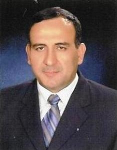
Biography:
Abdul Karim Said Al Makadma has completed his Diploma of Child Health from the Royal College of Physicians and Surgeons in Dublin, Ireland. He was trained at IWK Health Center in Dalhousie University in Canada and has been certified in Adolescent Medicine and General Pediatrics training. He has obtained his Masters of Health Professions Education from Maastricht University, Netherlands. He is currently certified by "Who’s Who in the world" 2010 and a recognized by "Who’s who In Asia" 2012 as the Founder of the Adolescents Medicine in Saudi Arabia and the Chairman of the Adolescent Medicine and General Pediatrics Department at the Children’s Hospital, King Fahad Medical City in Riyadh, Saudi Arabia. He is the author of few books in the health field, both in English and Arabic. He has published many articles in numerous of the highly ranked international journals, also he is a recognized Reviewer for Elsevier journals specially The Journal of Adolescent Health.
Abstract:
ROHHAD is a rare disease that affects young children at 1.5 years of age; clinically it is defined as the (Rapid-onset obesity with hypothalamic dysfunction, hypoventilation and autonomic dysregulation). According to the NIH ROHHAD morbidity rate is high especially with delayed diagnosis and intervention. Little is known about the ROHHAD syndrome in the Saudi pediatrics population. Our main objective of the current study is to explore the occurrence of the ROHHAD syndrome in Saudi children. We are using the international definition for ROHHAD to identify the possible cases, particularly the NIH definition. Moreover we carried out the required diagnosis including a full blood profile and clinical assessment. Our findings showed a positive case of ROHHAD to a three years old girl that was admitted to the King Fahad Hospital, May 2012. The child suffered from hyperphagia polydipsia and polyuria, starting the age of 30 month, as a result of which she has gained weight of 33 kg with BMI of 28. Never the less the investigations revealed a high prolactin level of 2076 ng/ml with continuous repeat of t: 1490 ng/ml. Sleep studies were carried out and showed Sleep apnea by which the ROHHAD syndrome was confirmed. In conclusion, here we identified for the first time the ROHHAD case in Saudi Arabia which also the first reported in the GCC (Gulf Cooperation Council). More studies are needed with multi-disciplinary approach to investigate the ROHHAD syndrome that might be overlooked in our region.
Abeer Khaled Al-Baho
Ministry of Health, Kuwait
Title: The Barriers to Physical Activity among Kuwaiti adults 2014
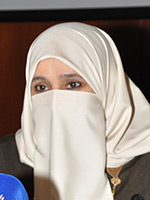
Biography:
Abeer Khaled Al-Baho is a Consultant Family Physician. She completed doctorate of Family Medicine in the year 1989.She was a trainer in Family Medicine Training Program in 1992. She was a F M Examiner in 1998.
 She was the Director of Family Medicine Training Program 2001-2008.
She was the Chairman of Primary Health Care 2008. She is a Member of General Practitioners Evaluation Committee 2002 – 2009 and Member of Geriatric care in GP 2003- 2009 .
She is an Ex-Member of the Arab Board for F M. She is a Member of the Editorial Board of Kuwait Medical Journal and Middle-East Family Medicine Journal. International Member ship RCGP (MRCGP Int) April-2005.Fellowship RCGP-April 2005. She was Chairman for Health Promotion Department 2008
Abstract:
Background- Regular Physical activity is associated with many positive health outcomes related to prevention and control of obesity and non-communicable diseases which have a high prevalence in Kuwait. The aim of our study was to investigate level of physical activity among Kuwaiti adults and the interfering barriers. Methods- A cross sectional randomized study was used to collect data about physical activity level among 1061 Kuwaiti adults using the International Physical Activity Questionnaire, Arabic version and perceived barriers to physical activity were investigated using an ecological framework. Regression analysis was used to determine the predictors of physical activity among participants. Results- The results revealed that 19.13% of the sample did not perform any physical activity and 38.1% had low physical activity level, with no significant difference between males and females. The most common perceived barriers were hot weather, work commitment, laziness, lack of time and chronic diseases. While chronic diseases, laziness, lack of support from friends and lack of safe places were the main predictors of low physical activity. Conclusions- A comprehensive health promotion program including environmental and social modifications in addition to health education must be planned to improve physical activity among Kuwaiti adults
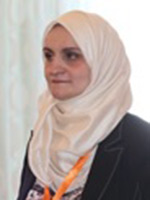
Biography:
Mayyada Wazaify is currently working as a professor of Pharmacy Practice at The University of Jordan. She has worked as a visiting lecturer at The University of Bath, UK (2012-2015). She has completed her PhD from Queen's University of Belfast, UK in 2003. She has published more than 35 papers and has been serving as an editorial board member in reputed international journals and conducted and supervised more than 50 research projects in Jordan and abroad in the field of clinical and pharmacy practice, particularly prescription and OTC drug misuse and abuse
Abstract:
Background- Münchausen syndrome is a mental illness, in which a person repeatedly acts as if he or she has a physical, emotional or cognitive disorder when, in truth, he or she has caused the symptoms. Although it has been described in the medical literature as “seeking attention†tool, Münchausen syndrome in this case report is also suspected to be the cause for drug addiction. Case descriptions- This was a 45-year-old male patient with multiple medical complains over the years, most of his complaints could not be explained on clinical or organic basis. We believe that his main goal was to justify his drug seeking behavior and to obtain different forms of secondary gains and social security support. The patient was secretly abusing a cocktail of anticholinergic and narcotic drugs which we believe eventually led to his death. He claimed to have chronic headaches and back pain and caused self-harm, such as intentionally opening the surgical wound over his pace-maker, in order to obtain narcotic analgesics. Moreover, he was secretly taking a beta-blocker without any prescription to deliberately induce bradycardia so that he could obtain atropine from the hospital. Conclusion- This case report is important because missing the diagnosis of Münchausen’s syndrome possibly resulted in the inappropriate course of action in his treatment. There could have been some use of psychoanalysis and cognitive behavioural therapy or an addition of a selective serotonin reuptake inhibitor. Moreover, this case reports the abuse of beta blockers for the sake of causing bradycardia and seeking anticholinergic drugs. It is suggested that clinicians consider the specific motivation for drug abuse in all cases of factitious disorders such as Münchausen’s syndrome, and avoid any assumption that it has been carried out for the purpose of controlling genuine symptoms. Involvement of psychiatrists is strongly recommended
Mandar Ambike
Gulf Medical University, United Arab Emirates
Title: Skills fading and skills forgotten
Biography:
Will be updated soon!!!
Abstract:
The world is changing very fast. The digital revolution has changed many perspectives. The skill which we learned over the years may not be relevant in the upcoming era. Factual knowledge is losing its charm. Sophisticated instruments may change the role of a Doctor from Operator to Supervisor. On one side we are changing the curriculum from traditional to integrate and on other side we are producing super-specialist, which compartmentalizes the human body and so cannot see a human being as a whole. We are depending more upon the instruments than communication. The digital world has reduced interaction between the people. The skill which will make Doctors superior than instruments will be communication. And also communication is two way traffic; not one way!
Alka Ahuja
Oman Medical College, Oman
Title: Development of nanoemulsion for popinirole in treating central nervous system disorders

Biography:
Alka Ahuja is a Professor in Pharmaceutics at Department of Pharmacy, Oman Medical College, Muscat. She has a Teaching and research experience of 30 years. She is a recipient of several Awards and Honors including University Gold Medals, Indian Drugs Manufacturers Association - G.P. Nair Award, “Career Award for young teachers†by All India Council for Technical, Education, Best Scientific Research publications and presentation awards. She is an invited speaker at several national and international conferences held in India, Oman, US, UK, Holland, Turkey etc. She is an Editorial Board Member and Reviewer for several National/International professional journals.
Abstract:
Nanoparticles are used in biomedical applications as drug carriers or imaging agents. These include polymeric nanoparticles, SLN, NLC and lipoplexes. The lecture will cover classification and methods of preparation of nanoparticles including polymeric, nonpolymeric and metallic nanoparticles. Therapeutic strategies for tumor targeting using nano particulate systems including Pegylation, role of nanoparticles in inhibition of p-glycoproteins and to overcome drug resistance in tumors as well as application of non-viral gene therapy using nanoparticles will be highlighted. The presentation will highlight the research work which achieved the objective of making transition and paradigm shift of conventional ropinirole formulation to the modern nanotechnology based system for the anti-Parkinson activity. The optimized formulations were designed in nanometric state with mucoadhesion property which synergized and improved the pharmacokinetics requirement in the disease. The route of administration via nose demonstrated and authenticated the concept of nose to brain targeting in the safe effective manner. The optimized formulation consisted of sefsol, tween 80 and transcutol P (NEROP27) showing desirable particle size, % transmittance, ex vivo permeation and PC. Nanoemulsion NEGM1 provided the highest porcine nasal mucosa supported release (72.23%) amongst the optimized formulations whereas ropinirole solution showed a release of only 11.9% in 24 h. Homogenized nanoemulsion formulations were coated with chitosan to increase the effective mucoadhesion. The tagged formulations were administered into alternating nostrils (total volume = 15 µl in each nostril), and the rat was exposed under the gamma camera for imaging and at specified time interval. The drug level in different organs was estimated by gamma scintigraphy. Thus, coated and non-coated nanoemulsions exhibited significantly higher distribution of radioactivity (p<0.05) in the brain as compared to the other body organs when compared with the nasal and I.V. solutions of ropinirole. The higher brain uptake of nanoemulsion could be attributed to the superior permeation of the nanocarriers across the biological barriers. Different brain targeting parameters also favoured the nose to brain drug delivery over the intravenous route of administration. Brain uptake was significantly (P<0.05) increased (in terms of Cmax and AUC) for the mucoadhesive formulation (CSNEROP) as compared to a simple nasal SolnROP formulation.
Ihsan Ullah Khan
GMC Hospital and Research Centre, UAE
Title: Thimble urinary bladder: Effect of complicated UTI or Naswar, a dilemma: Case report
Biography:
Will be updated shortly!!!
Abstract:
Normal urinary bladder capacity is very important for the maintenance of normal voiding pattern. Reduced bladder capacity disturbs reservoir function of urinary bladder. Patient may suffer from frequency of urination, urgency and even incontinence. It makes life of the patient miserable. Bladder capacity can be markedly affected in different conditions. One such important condition is genitourinary tuberculosis, which reduces the bladder capacity up to 10-15 ml. Other conditions may be interstitial cystitis and Bilharziasis. We encountered and reporting a case of small capacity bladder (10-12 ml capacity only) which was not due to genitourinary tuberculosis but might be a sequelae of Naswar (smokeless tobacco) to which patient was addicted for a long period of time or complicated cystitis due to Pseudomonas aeruginosa infection which patient was having for two years and could not be eradicated due to non compliance. He has developed thimble urinary bladder in less than two years time. This case is a dilemma and hopes to generate a discussion and interest for further studies into the topic.
Ghaleb Elyamany
Cairo University, Egypt
Title: The role of FDG-PET and bone marrow examination in lymphoma staging: Is bone marrow biopsy still necessary?

Biography:
Elyamany has obtained his MD from Cairo University, Egypt, 1993 and his MSc from Ain Shams University, Cairo, Egypt, 1999. He has completed his PhD in Hematology and Blood Banking from Al-Azhar University, Egypt, 2005. In 2007, He has joined the Canadian Fellowship Training Program of Hematological Pathology at the University of Toronto. His Clinical Fellowship Training was completed in Hematological Pathology (2007-2009) leading to FRCPC. Currently, he is a Consultant of Hematopathology and Transfusion Medicine at Prince Sultan Military Medical City, Riyadh, Saudi Arabia. His research focuses in the field of haematological disorders with special interest on molecular genetic studies of hematolymphoid neoplasms. He has published more than 42 papers in reputed journals and has been serving as a Reviewer in some medical journals
Abstract:
Achieving a correct histological diagnosis and an accurate staging of the disease are the first and most relevant steps in the management of patients with lymphoma. Bone marrow aspirate and trephine (BMB) is the current gold standard for the assessment of BM involvement. Recently, Positron emission tomography (PET) using 18fluoro-2-deoxyglucose (FDG) has become a standard clinical tool for staging and response assessment in aggressive lymphomas. Several studies and consensus conclude that if a PET/CT is performed, a BMB is no longer indicated for HL, DLBCL and FL. BMB is only needed for DLBCL if the PET is negative and identifying a discordant histology is important for patient management. In the other hand, several studies and the consensus is that, at present, FDG-PET has a complementary role to play in the assessment of BM involvement in patients with lymphoma but cannot replace a BMB. A meta-analysis published in 2004 examined the role of FDG-PET in the assessment of BM involvement in both HL and NHL; it included data from 13 clinical studies and a total of 587 patients; the authors concluded that FDG-PET could complement a BMB in the staging of lymphoma, but it cannot replace it. Similarly, most studies report a significant rate of false-negative FDG-PET in patients with ‘indolent’ NHL with a positive BMB, resulting in a low sensitivity for FDG-PET to detect BM involvement. In summary, the consensus is that, at present, FDG-PET has a complementary role to play in the assessment of BM involvement in patients with NHL but cannot replace a BMB whereas the current evidence suggests that FDG-PET/CT may be an appropriate method to replace BMB in newly diagnosed HL. Prospective studies of larger numbers of patients and in multiple centers are needed before conclusions derived from these results can be adopted into clinical practice
Mayyada Wazaify
The University of Jordan, Jordan
Title: Multiple prescription drug abuse and salt craving in a psychotic patient: A Case report from a teaching hospital in Jordan
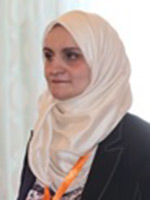
Biography:
Mayyada Wazaify is currently working as a professor of Pharmacy Practice at The University of Jordan. She has worked as a visiting lecturer at The University of Bath, UK (2012-2015). She has completed her PhD from Queen's University of Belfast, UK in 2003. She has published more than 35 papers and has been serving as an editorial board member in reputed international journals and conducted and supervised more than 50 research projects in Jordan and abroad in the field of clinical and pharmacy practice, particularly prescription and OTC drug misuse and abuse
Abstract:
Introduction- Diuretics and laxative abuse as a means of purging is common in patients with bulimia nervosa and there may be an underestimation of the true prevalence of diuretic abuse, as some are also available without prescription. Case Presentation- A 28-year-old woman presented with tetany due to hypocalcemia, hypokalemia and hypomagnesemia. She had a history of laxative and diuretic abuse, and salt craving. Psychiatric evaluation revealed a disturbed social history with masked depression that necessitated treatment. Conclusion- Multiple prescription drug abuse and salt/salty food addiction usually reflects a personality of addiction, which leads to harmful use and dependence
Sandhya Rani Guggilla
Kakatiya University, India
Title: Influence of menstrual cycle on the pharmacokinetics of antibiotics
Biography:
Will be updated shortly!!!
Abstract:
Introduction: For several reasons no two individuals can be considered identical and hence individualization of therapy is the current trend in treating the patients. The purpose of this study is to characterize the influence of menstrual cycle on the pharmacokinetics of Doxycycline in healthy females. Twelve healthy female volunteers have been included in the study after obtaining written informed consent. The age ranged from 16 to 25 years. Experimental design: The volunteer selection and recruitment will be carried out after obtaining informed consent from each volunteer. The drug administration will be done to each volunteer at 7 AM along with a glass of water after an overnight fasting on 3rd, 13th and 23rd day of menstrual cycle. These saliva samples will be stored under frozen conditions until HPLC analysis. Results: In the present study the changes in estrogen levels during ovulatory phase have not shown any influence on AUCo-t of Doxycycline. Only AUCo-t of doxycycline showed an increasing trend with increasing levels of estrogen in ovulatary phase but not in other phases. Even though the FSH levels differed significantly among volunteers during different phases FSH does not seem to influence overall pharmacokinetic behavior of Doxycyline during different phases. The present study indicated only the trend that the hormone levels may influence the pharmacokinetic behavior of the Doxycycline. Conclusion: In the present study the changes in hormones have shown an increasing C-max, increasing AUCo-t of Doxycycline pharmacokinetics significantly in follicular phase than ovulatory and luteal phases among volunteers during different phases. In other pharmacokinetic properties like clearance, biological half-life, volume of distribution, mean residence time, the change was not significant.
Mohammad Bashaar
Universiti Sains Malaysia, Malaysia
Title: Barriers towards physical activity among students enrolled in Universiti Sains Malaysia (USM)

Biography:
Mohammad Bashaar received his Ph.D from Universiti Sains Malaysia, in Pharmaceutical Policy. He has more than six years of working experience with Government Islamic Republic of Afghanistan (GIROA), United Nations Development Program (UNDP), and United States Agency for International Development (USAID) in Afghanistan. He has worked in close relation with Health Action International (HAI) and General Directorate of Pharmaceutical Affairs (GDPA), Afghanistan on External Reference Pricing (ERP). He has also closely worked with (Net Rational Use of Medicine) NetRUM and moderated many essential medicine related discussions. He has conducted more than 50 hospital and pharmacy management trainings, workshops and seminars in Kabul – Afghanistan and trained more than 550 health activists. He has published many scholarly publications and studies about the generic medicine prices and quality in reputable journals. He has participated in diverse capacities (as a facilitator, consultant and organizer in different workshops, seminars and trainings nationally and internationally. Internationally, he participated in 4th International Conference and Exhibition on Pharmaceutics & Novel Drug organized by OMICS at San Antonio, USA, 2014, ISPOR 19th Annual International Meeting, Montreal, QC, Canada, 2014 ISPOR 15th European Annual Congress in Berlin, Germany, 2012, WHO/UNICEF Technical Briefing Seminars on “Essential Medicines and Pharmaceuticals Policies†in 2011, 2009, 2008 and 2007 at WHO-HQ, Geneva, Switzerland. His research interests include pharmacoeconomics, medicine prices, and promoting generic medicines
Abstract:
Objective- To explore the barriers and factors that affect the physical activity and to find solutions in order to minimize identified barriers. Methods- A descriptive cross-sectional study was designed and carried out by using pre-validated questionnaire. The questionnaires were distributed equally among students from eight different schools in Universiti Sains Malaysia (USM) (n = 480). The data were analysed using Statistical Package for Social Sciences (SPSS) version 16.0. Descriptive statistics (Frequencies and Percentages), the chi-square test and the Cramer’s V test were applied to evaluate any possible association between barriers towards physical activity among students and the demographic data. Results- Findings highlight that more than half of the respondents, 54.0% agree that they are thinking of having physical activity but they just failed to get started exercising. Meanwhile, 55.4% of the total sample shown their disagreement, that they did not have an access in university to proper facilities such as swimming pool, jogging trails, bike paths for physical activity. Interestingly, more than half of the students 54% have been thinking about getting more exercise but they just cannot seem to get started. In contrast, 50.4% asserted that they do not get enough exercise because they have never learned the skills for any sport. Conclusion- Overall, it is not easy to quantify physical activity, however it can be concluded that, among the Universiti Sains Malaysia students, internal barriers prevail over the external ones. A well-organized and systematic approach for the promotion of physical activity requires for university students in order to stay healthier
Farida Arjuman
National Institute of Cancer Research & Hospital, Bangladesh
Title: Intraoral buccal mass as the manifestation of testicular choriocarcinoma – A Case report
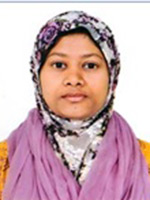
Biography:
Farida Arjuman has completed F.C.P.S. in Histopathology at the age of 37 years from Bangabandhu Sheikh Mujib Medical University (BSMMU) under Bangladesh College of Physicians & Surgeons (BCPS). She is the assistant professor of the department of Histopathology at National Institute of Cancer Research & Hospital (NICRH), Mohakhali, Dhaka, Bangladesh. She has published three papers in national reputed journals and presented many articles in national & international seminars and conferences held in Bangladesh
Abstract:
Metastatic tumors to the oral cavity are extremely rare lesions that represent 1% of all oral and maxillofacial malignancies. It is invariably associated with a widespread disease and a poor prognosis. Such metastasis occurs mostly in the jaw bones than the soft tissues of the mouth. Metastasis to the oral soft tissues most prevalently affects the gingiva and alveolar mucosa. We present an unusual case of a testicular choriocarcinoma metastasized to the buccal mucosa mimicking a reactive lesion. An 18 year old male patient presented with a right sided intraoral buccal mass for one month in the department of oral & maxillofacial surgery department of NICRH. Intraoral physical examination detected a nodular tumor, sessile and bleeds when manipulated. Clinically it was diagnosed as pyogenic granuloma. In addition there was right sided non-tender testicular swelling which he noticed eight months earlier. His beta HCG level was 225000 mIU/ml and alfa Fetoprotein level was 2.23ng/ml. Ultrasonography shows right testicular mass, para-aortic lymphadenopathy and multiple hepatic SOL. CT scan shows soft tissue mass in the right hemimandible area. Excision of the right sided intraoral buccal mass and right sided hemimandibulectomy was done. Histopathological examination reveals testicular choriocarcinoma. The primary lesion must be removed by orchiectomy. In patients with metastatic illness, the disease must be controlled with cytotoxic chemotherapy, which results in complete regression of the metastasis in 60% to 90% of patients
Ghassan M. Matar
American University of Beirut and Medical Center, Lebanon
Title: Assessment of MIC levels in carbapenem resistant Enterobacteriaceae in relation to carbapenemases, ESBLs and bacterial intrinsic factors
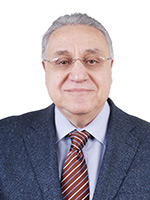
Biography:
Ghassan M. Matar is currently a Professor in the Department of Experimental Pathology, Immunology & Microbiology and Laboratory Director of the Center for Infectious Diseases Research at the Faculty of Medicine (CIDR), Faculty of Medicine- American University of Beirut (AUB). He was a post-doctoral fellow (Fulbright) at the Centers for Disease Control Prevention (CDC) and Department of Microbiology and Immunology, Emory University in Atlanta, Georgia, USA. He was then appointed as Research Microbiologist at the Division of Bacterial and Mycotic Diseases, CDC. He was also appointed as Assistant Dean at the Faculty of Health Sciences, AUB. He currently serves as resource advisor in the WHO-Advisory Group on Integrated Surveillance of Antimicrobial Agents (AGISAR), and as American Society for Microbiology (ASM) Ambassador to Lebanon and member of the ASM Ambassador Leadership Circle. He leads jointly with the Ministry of Public Health, Pulse Net Lebanon, under the sponsorship of WHO and CDC. He serves also as TOP-Regional moderator of ProMed-mail at the International Society for Infectious Diseases. To present he published 90 articles in refereed international journals and presented 115 abstracts in international, regional and local conferences. He received funding from intramural and various extramural sources
Abstract:
Background - The surge of multidrug-resistant Enterobacteriaceae increased dependence on carbapenems resulting in the rise of carbapenem resistant Enterobacteriaceae (CRE). This study aimed at correlating carbapenem resistance and outer membrane proteins (OMPs) encoding genes to MIC levels among clinical isolates of Escherichia coli and Klebsiella pneumoniae. Methods- The MICs of E. coli (n= 76) and K. pneumoniae (n=54), collected between July 2008 and July 2014, were determined against ertapenem (ERT), imipenem (IMP) and meropenem (MER). PCR was performed on all 130 isolates to amplify the resistance and OMPs encoding genes: bla OXA-48, blaNDM-1, blaCTXM-15, OMPC and OMPF. Electroporation, efflux pump and PFGE were performed on selected isolates harboring the resistance and OMPs encoding genes. Results- The prevalence of resistance genes encoding for bla OXA-48, blaNDM-1or blaCTXM-15 among E. coli isolates were 36%, 12% and 80%, respectively, while among K. pneumoniae were 37%, 28%, and 72%, respectively. K. pneumoniae isolates positive for any of the three resistance encoding genes: bla OXA-48, blaNDM-1 and blaCTXM-15 had an MIC90 > 32µg/ml against ERT, IPM and MER. While in E. coli isolates harboring any of the three genes, there was a variation in the MIC90 values. Porin impermeabilities due to loss of OMPC and OMPF genes in K. pneumoniae, enhanced MIC90 values in these clinical isolates. Electroporation confirmed the sole role of the resistance encoding genes in conferring carbapenem resistance. Conclusion- Levels of MIC in CRE may largely depend on the type of resistance encoding genes, and porin loss. Such information can be helpful for antimicrobial treatment and stewardship
